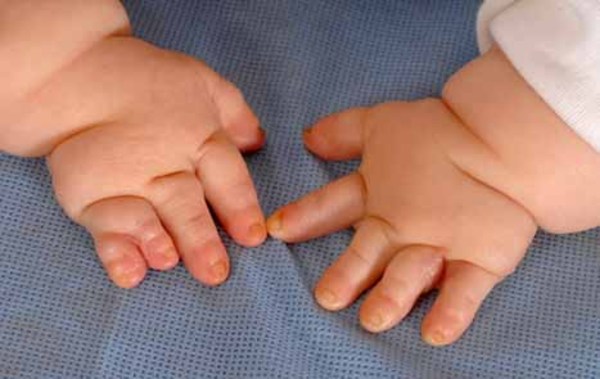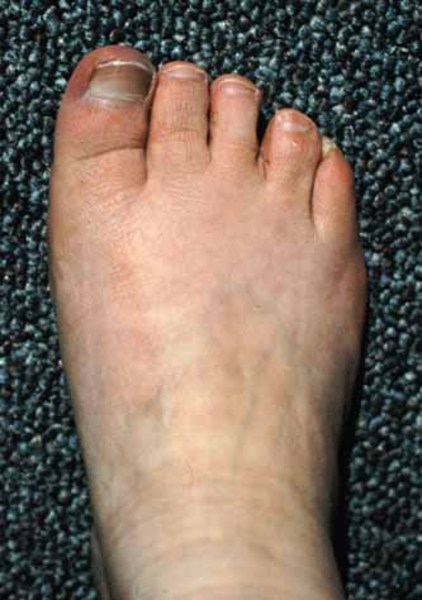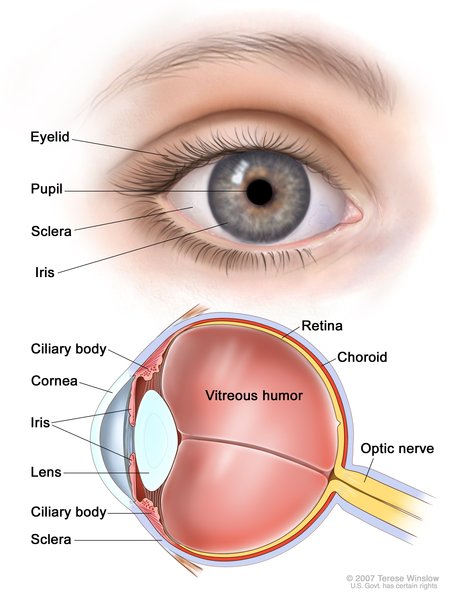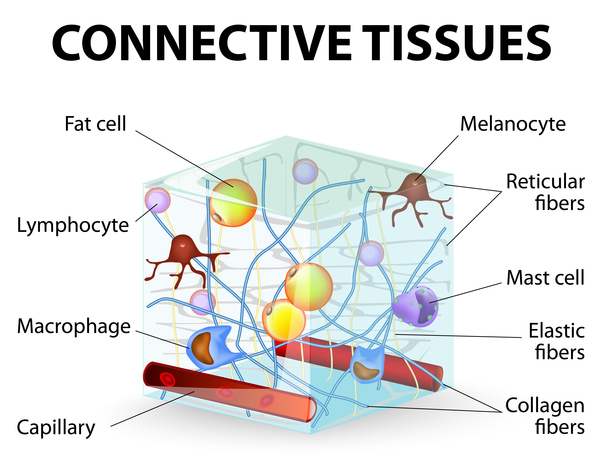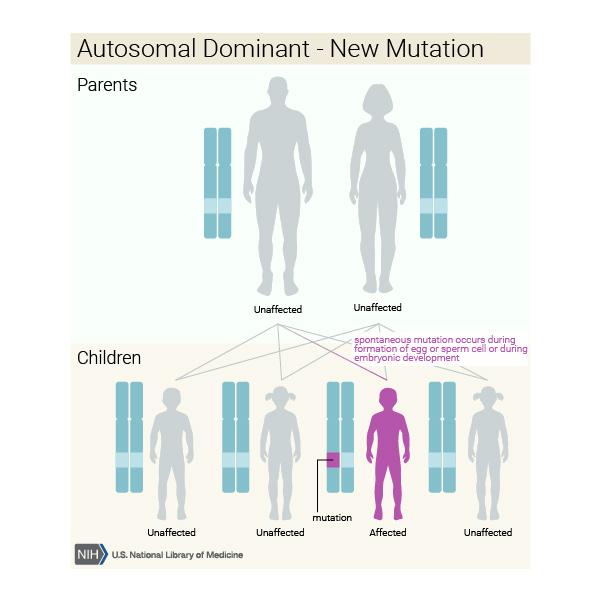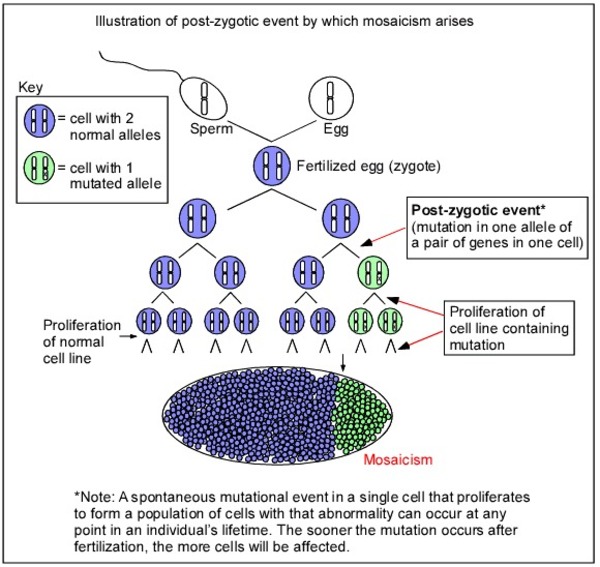Frequency
Platyspondylic dysplasia, Torrance type is very rare, though the exact prevalence is unknown.
Causes
Platyspondylic dysplasia, Torrance type is caused by variants (also called mutations) in the COL2A1 gene. This gene provides instructions for making the alpha-1(II) chain, which is a component of type II collagen. This type of collagen is found in the clear gel that fills the eyeball![]() (the vitreous) and in cartilage. Cartilage is a tough, flexible tissue that makes up much of the skeleton during early development; most cartilage is later converted to bone. Type II collagen is essential for the normal growth and development of bones and other connective tissues
(the vitreous) and in cartilage. Cartilage is a tough, flexible tissue that makes up much of the skeleton during early development; most cartilage is later converted to bone. Type II collagen is essential for the normal growth and development of bones and other connective tissues![]() .
.
Most of the COL2A1 variants that cause platyspondylic dysplasia, Torrance type affect a region of the protein called the C-propeptide domain. These variants cause the cell to produce an abnormal version of the COL2A1 protein, which interferes with the formation of mature type II collagen molecules. In some cases, the abnormal alpha-1(II) chains build up in cartilage-forming cells (chondrocytes). Without enough functioning type II collagen, bones and other connective tissues cannot develop properly, leading to the skeletal abnormalities seen in infants with platyspondylic dysplasia, Torrance type.
Inheritance
This condition is inherited in an autosomal dominant pattern![]() , which means one copy of the altered gene in each cell is sufficient to cause the disorder. This condition is usually the result of a new (de novo) variant in the gene that occurs during the formation of reproductive cells (eggs or sperm) in an affected individual's parent or during early embryonic development. These affected individuals typically have no history of the disorder in their family. However, in some cases, a parent has been found to carry the same variant in a small number of their cells, which is known as somatic mosaicism
, which means one copy of the altered gene in each cell is sufficient to cause the disorder. This condition is usually the result of a new (de novo) variant in the gene that occurs during the formation of reproductive cells (eggs or sperm) in an affected individual's parent or during early embryonic development. These affected individuals typically have no history of the disorder in their family. However, in some cases, a parent has been found to carry the same variant in a small number of their cells, which is known as somatic mosaicism![]() .
.
Other Names for This Condition
- Platyspondylic dysplasia, Torrance-Luton type
- Platyspondylic dysplasia, type Torrance, COL2A1-related
- Platyspondylic lethal skeletal dysplasia, Torrance type
- PLSD-T
Additional Information & Resources
Genetic Testing Information
Genetic and Rare Diseases Information Center
Patient Support and Advocacy Resources
Catalog of Genes and Diseases from OMIM
Scientific Articles on PubMed
References
- Gregersen PA, Savarirayan R. Type II Collagen Disorders Overview. 2019 Apr 25 [updated 2024 Oct 24]. In: Adam MP, Feldman J, Mirzaa GM, Pagon RA, Wallace SE, Amemiya A, editors. GeneReviews(R) [Internet]. Seattle (WA): University of Washington, Seattle; 1993-2025. Available from http://www.ncbi.nlm.nih.gov/books/NBK540447/ Citation on PubMed
- Neumann L, Kunze J, Uhl M, Stover B, Zabel B, Spranger J. Survival to adulthood and dominant inheritance of platyspondylic skeletal dysplasia, Torrance-Luton type. Pediatr Radiol. 2003 Nov;33(11):786-90. doi: 10.1007/s00247-003-1055-x. Epub 2003 Sep 5. Citation on PubMed
- Nishimura G, Nakashima E, Mabuchi A, Shimamoto K, Shimamoto T, Shimao Y, Nagai T, Yamaguchi T, Kosaki R, Ohashi H, Makita Y, Ikegawa S. Identification of COL2A1 mutations in platyspondylic skeletal dysplasia, Torrance type. J Med Genet. 2004 Jan;41(1):75-9. doi: 10.1136/jmg.2003.013722. No abstract available. Citation on PubMed or Free article on PubMed Central
- Okamoto T, Nagaya K, Asai H, Tsuchida E, Nohara F, Hayashi T, Yamashita A, Nishimura G, Azuma H. Platyspondylic lethal dysplasia torrance type with a heterozygous mutation in the triple helical domain of COL2A1 in two sibs from phenotypically normal parents. Am J Med Genet A. 2012 Aug;158A(8):1953-6. doi: 10.1002/ajmg.a.35509. Epub 2012 Jun 18. Citation on PubMed
- Zankl A, Neumann L, Ignatius J, Nikkels P, Schrander-Stumpel C, Mortier G, Omran H, Wright M, Hilbert K, Bonafe L, Spranger J, Zabel B, Superti-Furga A. Dominant negative mutations in the C-propeptide of COL2A1 cause platyspondylic lethal skeletal dysplasia, torrance type, and define a novel subfamily within the type 2 collagenopathies. Am J Med Genet A. 2005 Feb 15;133A(1):61-7. doi: 10.1002/ajmg.a.30531. Citation on PubMed
The information on this site should not be used as a substitute for professional medical care or advice. Contact a health care provider if you have questions about your health.








